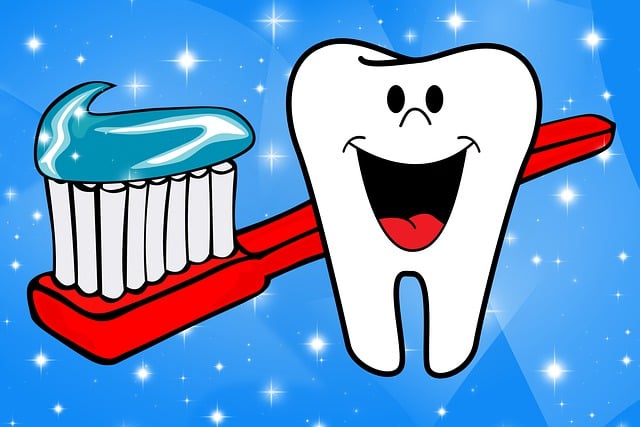X-rays and CT scans are vital diagnostic tools in dentistry, providing precise visualizations of dental structures and conditions. They are instrumental in identifying tooth decay, gum issues, and jawbone density, which are crucial for accurate diagnosis and personalized treatment planning, particularly in complex cases like those requiring dental implants or Invisalign aligners in Cardiff. These advanced imaging tools enable dentists to create highly customized treatment plans, enhancing the effectiveness of Invisalign therapy by allowing for precise aligner creation. This precision not only improves the cosmetic appeal but also promotes better oral health and optimal alignment of teeth. Invisalign aligners have revolutionized orthodontic care in Cardiff, offering modern, personalized teeth straightening solutions that reflect a commitment to high-quality orthodontic care, with the early detection of issues facilitating preemptive adjustments to treatment plans for minimized risks and improved outcomes.
In the realm of modern dentistry, the integration of advanced imaging technologies has revolutionized the field, particularly in the application of Invisalign aligners for teeth straightening in Cardiff. This article delves into the transformative role of X-rays and CT scans, which have become indispensable tools in diagnosing underlying dental issues and crafting precise orthodontic treatments. As we explore the diagnostic power of these imaging modalities, we’ll uncover their significance in enhancing the effectiveness of Invisalign treatment plans. From the importance of high-resolution images to the evolution of dental radiology, readers will gain insight into how Cardiff clinics are at the forefront of this technological advancement. Join us as we examine the synergy between X-rays and CT scans, their impact on diagnosis accuracy, and their contributions to the success of Invisalign aligners, setting a new standard for teeth straightening in the region.
- Unveiling the Diagnostic Power of X-rays and CT Scans in Dentistry
- The Role of Advanced Imaging in Orthodontic Treatment with Invisalign Aligners in Cardiff
Unveiling the Diagnostic Power of X-rays and CT Scans in Dentistry
In the field of dentistry, X-rays and CT scans stand as pivotal diagnostic tools that uncover the intricacies of dental structures and underlying problems with remarkable precision. These imaging modalities provide invaluable insights into the condition of teeth, jawbone density, and the orientation of roots, which are critical for accurate diagnosis and effective treatment planning. The diagnostic power of X-rays is particularly useful in detecting cavities, tooth decay, and issues beneath the gum line, such as impacted wisdom teeth or abscesses. CT scans, with their advanced cross-sectional imaging capabilities, offer a more comprehensive view, enabling practitioners to assess the effects of dental diseases on adjacent structures with greater clarity. This is especially pertinent in complex cases where surgical interventions are required, such as dental implant surgery or orthodontic treatments involving Invisalign aligners for teeth straightening in Cardiff. The integration of these advanced imaging techniques allows dentists to tailor treatments to individual patient needs, ensuring optimal outcomes and minimizing the risk of complications. For instance, Invisalign treatment plans are significantly enhanced by the detailed insights provided by X-rays and CT scans, facilitating the creation of aligners that are precise and effective in straightening teeth. This not only improves the aesthetics of a patient’s smile but also contributes to better oral health by ensuring proper alignment and function of the teeth.
The Role of Advanced Imaging in Orthodontic Treatment with Invisalign Aligners in Cardiff
ortodontic assessments, Invisalign aligners have revolutionized the way dental professionals address teeth straightening needs. In Cardiff, as in many parts of the world, advanced imaging techniques such as X-rays and CT scans play a pivotal role in the diagnostic process prior to initiating orthodontic treatment with Invisalign aligners. These imaging modalities provide high-resolution, detailed views of the oral cavity, which are crucial for identifying underlying issues that could affect treatment outcomes. Dentists and orthodontists in Cardiff leverage this information to tailor Invisalign treatments to each patient’s unique dental structure, ensuring a more effective and efficient realignment of teeth. The precision afforded by these advanced imaging technologies helps in planning the series of custom-made aligners that gradually guide the teeth into their optimal positions. This approach not only enhances the aesthetic appeal of the smile but also promotes better oral health by improving occlusion and function, thus underscoring the importance of these imaging tools in the orthodontic treatment process with Invisalign aligners in Cardiff. Moreover, the use of such imaging ensures that any potential complications, such as impacted teeth or bone abnormalities, are identified early on, allowing for adjustments to the treatment plan and avoiding complications during the alignment phase. With the integration of advanced imaging, Invisalign aligners for teeth straightening in Cardiff offer a sophisticated solution that aligns with modern dental practice standards, ensuring patients receive high-quality care tailored to their specific needs.
In conclusion, the advancements in diagnostic imaging, particularly X-rays and CT scans, have significantly enhanced the field of dentistry, offering unparalleled insights into the oral cavity. The detailed analysis provided by these modalities is crucial for precise diagnoses and effective treatment planning, as exemplified by their integration in orthodontic procedures involving Invisalign aligners in Cardiff. These clear aligners have revolutionized teeth straightening, ensuring a more aesthetically pleasing and comfortable experience for patients seeking to improve their dental alignment. As these technologies continue to evolve, they promise to further refine diagnostic accuracy and treatment outcomes, marking a new era in the oral healthcare landscape.
